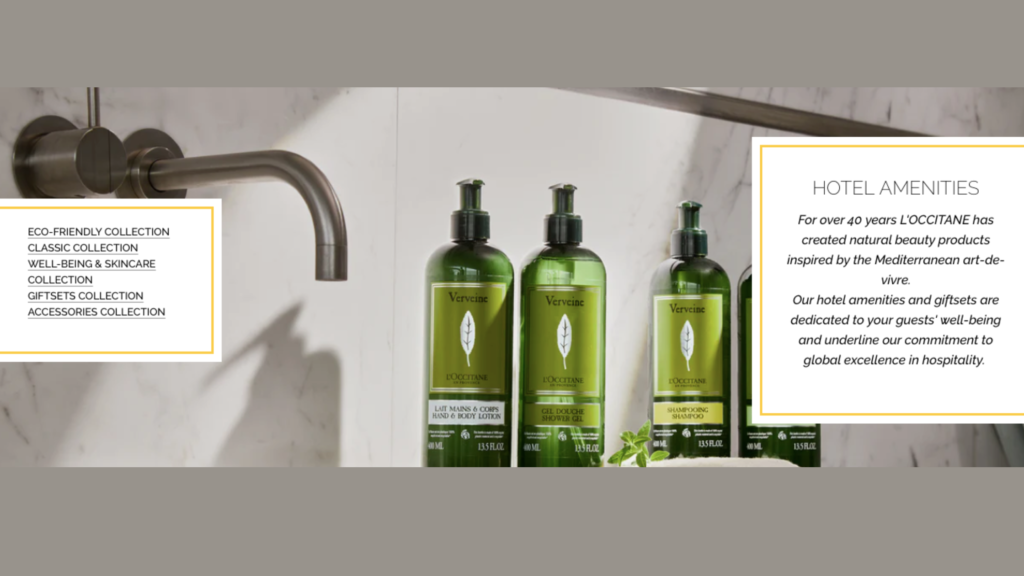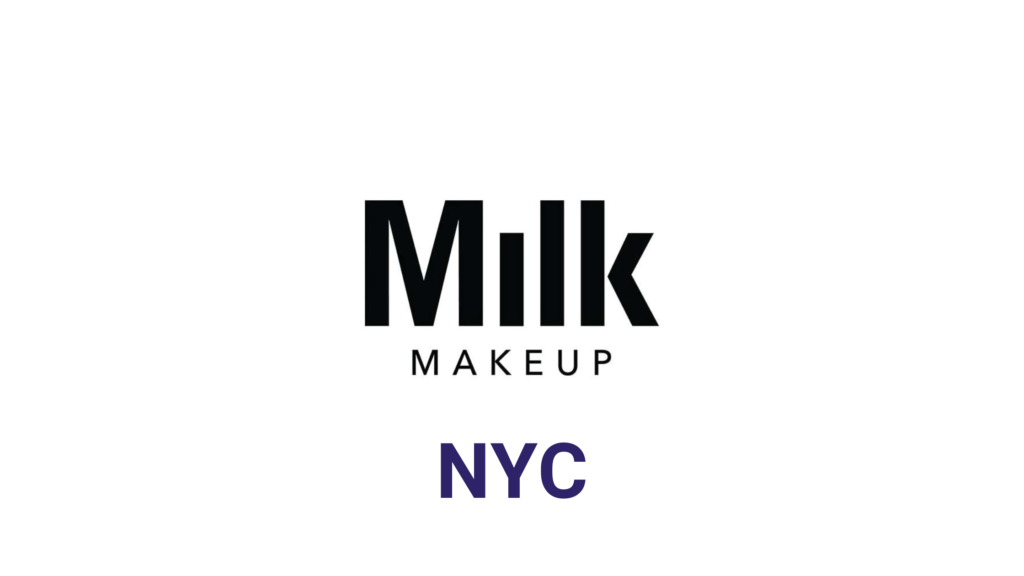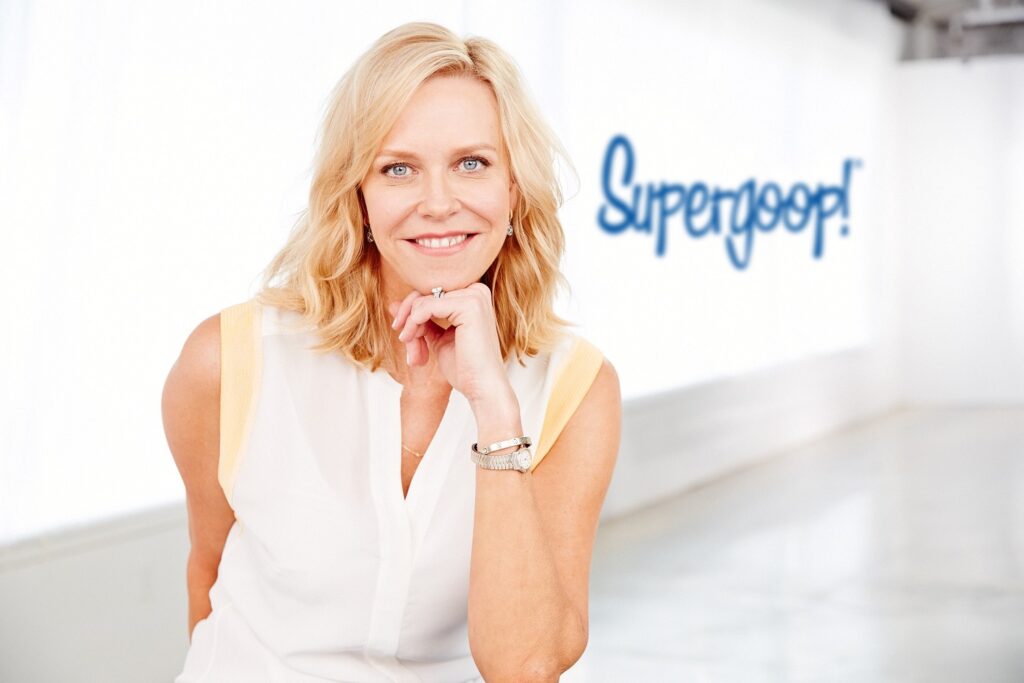Are you a beauty founder wondering how to enter & win the beauty retailers for hyper-growth and dominate your category? If yes, then this decision-making flow chart/process is for you. Going to retail is all about the correct sequence. Here’s a step-by-step guide to help you make the right decisions and win the beauty retailer.
TABLE OF CONTENTS
1. Is your category a fit with niche retail?
2. Always start with a beachhead/lead market/geo/city & follow a concentration Strategy
2.1 Alternative: Win the lead market as the beachhead
3. Create a proof of concept for velocity & category development.
4. Concentrate and become a significant player in the beachhead.
5. Move to the next lead/adjacent market and repeat from step.
5.1 Alternative Step 5: Move to the next lead/adjacent/strategic market and repeat from step 3
6. Launch & create a proof of concept for velocity & category development with specialty beauty retail
7. Penetrate specialty beauty retail
8. Launch & create a proof of concept for velocity & category development with multi-category department stores
9. Penetrate multi-category mass retail stores
10. Summary
STEP 1: IS YOUR CATEGORY A
FIT WITH NICHE BEAUTY RETAIL? E.G., TRAVEL, HEALTH, LIFESTYLE, ETC.
Niche retail refers to stores that cater to a specific group of customers or a particular market segment. For example, travel, health, and lifestyle are some of the niches that beauty brands can target.
-If Yes
Does it need intensive education for trial and
adoption
-If the answer is yes, then launch at PRO
Launch at professional services accounts or PRO stores that offer expert services to customers.
These accounts can help educate consumers about your brand and product.
PRO accounts include salons, spas, clinics, studios, and other professional services. They can also have online retailers that offer expert advice and recommendations, like Violet Grey.
Examples:
Travel-Pro: Professional service store: Travel Agency Inc.
Lifestyle-Pro: Professional service store: Personal Stylist Co.
Home Decor: Professional service store: Interior Designer LLC
Fitness: Professional service store: Personal Training Studio

For example, a beauty brand like Olaplex started by selling their hair treatments through professional hair salons and stylists.
If no, then launch at INDIE retailer focused on
(niche: travel, health & lifestyle, etc.).-
Examples:
Travel: Retail store: Flight 001
Lifestyle: Retail store: Urban Outfitters
Home Decor: Retail store: West Elm
Fitness: Retail store: Lululemon
Indie retailers are independent stores that focus on specific niches. These stores are perfect for launching products that don’t need extensive education.

One example of a beauty brand that started with a travel retailer is L’Occitane. The brand began in 1976 in Provence, France, and initially sold its products at local markets and fairs. In 1992, they opened their first travel retail store at Marseille Provence Airport, selling travelers their signature shea butter and lavender-scented products. The success of their travel retail stores led to the expansion of L’Occitane into specialty beauty retailers and department stores.

Herbivore Botanicals also launched its products at INDIE retailers like The Detox Market, which focuses on clean beauty products.
-If No: not a niche
Does it need intensive education for trial & adoption?
If yes – launch at PRO (try to niche)
If your category is not a niche and requires extensive education for trial and adoption, then you should consider launching at PRO retailers. These retailers have a highly trained sales team that can educate customers on the benefits of their products, which is crucial for categories that require intensive education.
For example, suppose you have a new skincare technology that requires some explanation. In that case, a PRO retailer with well-trained staff can help customers understand its benefits and encourage them to try it.

One example of a skincare brand with unique technology that first launched with clinics before entering specialty beauty retailers is SkinCeuticals. The brand was created in 1997 and initially only sold its products through dermatologists and plastic surgeons. SkinCeuticals’ products are formulated with advanced technologies such as vitamin C serums and broad-spectrum sunscreens that are designed to provide both corrective and preventive benefits for the skin.
The brand’s success in the professional skincare market led to its acquisition by L’Oréal in 2005. It has since expanded into the specialty beauty retail market with a wide range of skin care products available at retailers such as Sephora and Ulta Beauty.
If no – launch at INDIE beauty retailer
If your category is not a niche and does not require intensive education, you should consider launching at an INDIE beauty retailer. These retailers are typically smaller and more focused on specific categories, making them an excellent fit for brands that could be a better fit for larger retailers.

An example of a beauty brand that first launched with Credo before entering Sephora is Indie Lee. The brand launched with Credo in 2015 and gained popularity through word-of-mouth recommendations and social media buzz. It later expanded its distribution to Sephora in 2018.
Herbivore Botanicals also executed this step by launching its line of natural skincare products at INDIE beauty retailers like CAP Beauty and Follain. These retailers were a perfect fit for Herbivore Botanicals’ products, which cater to customers looking for natural and organic skincare options.
STEP 2: ALWAYS START WITH A
BEACHHEAD/LEAD MARKET FOR BEAUTY RETAIL & FOLLOW A CONCENTRATION STRATEGY
The next step is to start with a beachhead or lead market and follow a concentration strategy. This means focusing your efforts on a specific market or geographic area to establish a strong presence before expanding to other markets.

An example of a beauty brand that executed this step successfully is Glossier, a makeup and skincare brand that started by focusing on the New York market. They built a loyal following through social media and word of mouth before expanding to other cities and markets.
Herbivore Botanicals also followed this strategy, starting with a strong presence in their home city of Seattle before expanding to other markets.
STEP 2 ALTERNATIVE: WIN THE
LEAD BEAUTY RETAIL MARKET AS THE BEACHHEAD
Many health and beauty trends originate in major cities such as Los Angeles and New York City. By winning over consumers in these lead markets, brands can generate interest and gain momentum across the country.

Ouai was founded by celebrity hairstylist Jen Atkin in 2016, and its products quickly gained popularity in the LA area. Atkin leveraged her connections with celebrities and social media influencers to generate buzz for the brand. The products were soon stocked in high-end boutiques and beauty supply stores across Los Angeles. As the brand’s success grew, Ouai expanded its distribution to Sephora and other retailers across the USA.
STEP 3: CREATE
A PROOF OF CONCEPT FOR VELOCITY & CATEGORY DEVELOPMENT TO WIN BEAUTY RETAIL
In this step, you must create a proof of concept for velocity and category development. POC means establishing a solid presence in your initial market and demonstrating that your products can sell well and drive category growth.

RMS Beauty is known to have performed well at Credo Beauty. According to an article in WWD, the brand’s founder, Rose-Marie Swift, said that Credo was the first retailer to really support her line and help her gain recognition in the clean beauty industry. Swift also noted that Credo was the first retailer to sell out of the brand’s products. This success at Credo helped RMS Beauty expand its presence in other retailers, including Sephora.
Herbivore Botanicals also succeeded in this step, expanding their product offerings within their natural skincare category and demonstrating strong sales velocity in their initial markets.
STEP 4:
CONCENTRATE AND BECOME A SIGNIFICANT PLAYER IN THE BEACHHEAD BEAUTY RETAIL
Concentrate and become a significant player in the
beachhead doors,
accounts,
channel &
market
in the above Order.
Once you’ve established a strong presence in your initial market, it’s time to concentrate and become a significant player in that market. This means focusing on securing more doors, accounts, channels, and market share in your initial market.

Milk Makeup was founded in New York City in 2016 and quickly gained a strong following among fashion and beauty influencers, especially in New York. The brand has leveraged its edgy, fashion-forward aesthetic and strong social media presence to expand to other cities and eventually nationwide. Milk Makeup is also known for its innovative, cruelty-free products and inclusive messaging.

Another example of a beauty brand that followed this sequence is Supergoop! Founded in 2007 by Holly Thaggard, Supergoop! began as a small brand focused on providing high-quality sun protection products. Thaggard started by targeting select specialty retailers, concentrating on becoming a significant player in the beachhead first few doors of an account.
According to an interview with Thaggard, Supergoop! started with “small, independent specialty stores like Fred Segal and Barney’s New York.” By focusing on these initial accounts, the brand was able to build relationships and develop a loyal customer base.
After successfully establishing its presence in these select stores, Supergoop! penetrated all the doors of the accounts, expanding its reach and distribution within each retailer. The brand also expanded its product line to include more than just sun protection products, adding skincare and makeup items that complemented its existing offerings.
As Supergoop! continued to grow and gain traction, it penetrated the channel by expanding its distribution to other retailers and online platforms. Today, the brand is available at major retailers such as Sephora, Ulta Beauty, and Nordstrom, and its products are also sold online at sites like Amazon and the Supergoop! website.
By following this sequence, Supergoop! was able to establish itself as a major player in the sun protection and skincare markets, with a loyal customer base and a wide distribution network.
STEP 5: MOVE TO THE NEXT
LEAD/ADJACENT MARKET AND REPEAT FROM STEP 3
Once you have successfully penetrated and become a significant player in your beachhead market, it’s time to move on to the next lead/adjacent market. Follow the same steps from Step 3 to create a proof of concept, concentrate on becoming a significant player, and penetrate specialty beauty retail and multi-category retail stores.

Anastasia Beverly Hills started with eyebrow products and became a significant player in that market. They then moved on to create a range of other makeup products and became a major player in the beauty industry. They have penetrated specialty beauty retail and are also available in multi-category stores like Sephora and Ulta.
After creating a buzz with their natural skincare products, Herbivore Botanicals expanded into hair care and body care. They continued to focus on their niche of clean and natural products and became a significant player in that space. They have now penetrated specialty beauty retail and are available at stores like Credo and The Detox Market.
ALTERNATIVE STEP 5: MOVE TO
THE NEXT LEAD/ADJACENT/STRATEGIC GEO BEAUTY RETAIL MARKET AND REPEAT FROM STEP 3
Herbivore Botanicals opened their first brick-and-mortar store in Seattle in 2018. Since then, they have expanded to other cities, including New York City and Los Angeles, with additional stores and partnerships with retailers.
STEP 6: LAUNCH & CREATE
A PROOF OF CONCEPT FOR VELOCITY & CATEGORY DEVELOPMENT WITH SPECIALTY
BEAUTY RETAIL
Once you have a successful track record with indie retailers, it’s time to move on to specialty beauty retail. Launch your products in stores that specialize in your category and create a proof of concept for velocity and category development.

Charlotte Tilbury launched her eponymous brand with a focus on creating the perfect red lipstick. After becoming a significant player in the lipstick market, she expanded her range of products and launched at specialty beauty retail stores like Space NK and Sephora. Her brand has since become a major player in the beauty industry, with a focus on creating makeup looks inspired by celebrities.
After becoming a significant player in the indie beauty retail space, Herbivore Botanicals expanded into specialty beauty retail. They launched their products at Sephora, a store that focuses on clean beauty products. They continue to focus on creating natural and clean products and have become a favorite among customers who prioritize clean beauty.
STEP 7: PENETRATE SPECIALTY
BEAUTY RETAIL
Examples of specialty beauty retailers include Sephora and Ulta Beauty. Once a beauty brand has established itself in niche and indie retailers, and created a proof of concept for velocity and category development in a specialty retailer, the next step is to penetrate specialty beauty retail.

Tarte started as an indie brand in 2000, with a focus on natural and cruelty-free cosmetics. The brand’s early success was largely driven by its presence in specialty retailers such as Sephora, Ulta, and QVC. Tarte’s products, which included its cult-favorite Amazonian Clay 12-Hour Blush and Shape Tape Concealer, received positive reviews and generated buzz among beauty enthusiasts.
As Tarte’s popularity grew, the brand expanded its distribution channels to include department stores such as Macy’s and Nordstrom. This move helped Tarte reach a wider audience and solidify its position as a major player in the beauty industry. Today, Tarte is known for its high-performing, vegan-friendly makeup and skincare products and can be found in a variety of retailers, from specialty stores to major department stores.
Herbivore Botanicals also successfully penetrated specialty beauty retail by partnering with Sephora. Herbivore Botanicals is known for their natural and clean skincare products and gained a following through social media and word of mouth. They then expanded to select indie and niche retailers before entering specialty beauty retail with their Sephora partnership. Herbivore Botanicals’ emphasis on natural and non-toxic ingredients aligned well with Sephora’s clean beauty initiatives.
STEP 8: LAUNCH & CREATE
A PROOF OF CONCEPT FOR VELOCITY & CATEGORY DEVELOPMENT WITH MULTI-CATEGORY
DEPARTMENT STORES
Multi-category stores are retailers that carry a wide range of products across different categories. Examples of multi-category stores include Nordstrom & Neiman Marcus. Once a beauty brand has established itself in specialty beauty retail, the next step is to launch and create a proof of concept for velocity and category development with multi-category stores.
Herbivore Botanicals successfully launched and created a proof of concept for velocity and category development with multi-category stores, such as Anthropologie and Nordstrom. Herbivore Botanicals’ emphasis on natural and clean ingredients aligned well with the wellness and self-care trends that these multi-category stores cater to.
STEP 9: PENETRATE
MULTI-CATEGORY MASS RETAIL STORES TO WIN BEAUTY RETAIL
The final step in the decision-making flow chart is to penetrate multi-category mass retail stores. Once a beauty brand has established itself in multi-category stores, the next step is to expand to larger retailers that carry a wide range of products across different categories, such as CVS, Target and Walmart.

A beauty brand that executed this step well is Burt’s Bees. Burt’s Bees is a natural and eco-friendly beauty brand that started with their signature beeswax lip balm and expanded to a wide range of personal care products. They gained popularity through their affordable price point and emphasis on natural ingredients. Burt’s Bees is now widely available in mass retailers like Walmart, Target, and Amazon.
Another beauty brand that did this step well is Pacifica Beauty. Pacifica Beauty is a vegan and cruelty-free beauty brand that started as a small indie brand and gained popularity through social media and word of mouth. They then expanded to specialty beauty retail before entering multi-category stores like Target. Pacifica Beauty’s affordable price point and emphasis on vegan and cruelty-free products resonated well with the mass market.
SUMMARY

In conclusion, going to retail and winning the market is about the correct sequence. The decision-making flow chart includes steps such as determining if the beauty brand is a fit for niche retail, starting with a beachhead market and following a concentration strategy, creating a proof of concept for velocity and category development, and penetrating different types of retailers in a specific order.
Beauty founder, book a complimentary call and I will help you:
- Discover how to position your brand for success in the retail market
- Get personalized guidance on selecting the right retail partners for your brand
- Learn how to differentiate your brand and stand out from the competition on retail shelves
- Find out how to optimize your product assortment and pricing for retail sales
- Get insights on how to effectively market and promote your brand in a retail environment
- Receive guidance on navigating the complexities of retail negotiations and contracts
- Gain a clear understanding of the retail landscape and the opportunities available for your brand
- Benefit from customized strategies tailored to your brand’s unique needs and goals
Book a call or apply now to Jump Accelerator here!


